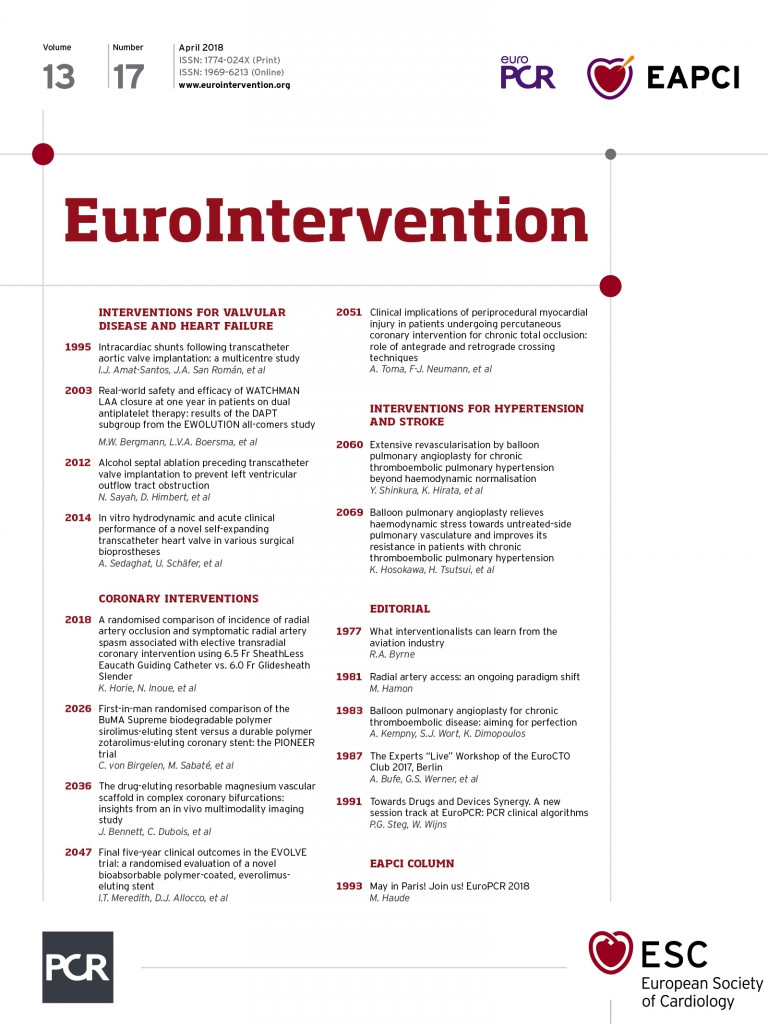
I read with interest the paper by Kweon and colleagues1 in which they proposed a prediction model for post-stenting fractional flow reserve (FFR) in a tandem lesion with a side branch. The authors derived the following two equations that predicted the FFR after treatment of distal (Equation 1) or proximal stenosis (Equation 2):
![]() (1)
(1)
![]() (2)
(2)
where w=Pa/(Pa−Pw)=1.33 and k=Q1/Q0. Their efforts are praiseworthy; however, they committed a serious error in their calculation. The authors calculated the hyperaemic coronary flow to each branch by using the P=QR equation. The problem is that the authors always calculated perfusion pressure as the difference between the distal coronary pressure and the wedge pressure (i.e., Pd−Pw). However, the perfusion driving pressure should be the difference between the distal coronary pressure and the central venous pressure (i.e., Pd−Pv), and Pv is usually considered zero when calculating the FFR2. The authors committed the same error in all their calculations. It seems that the bifurcation model described in the present study did not include the collateral supply. Thus, w=Pa/(Pa−Pv)=1 is correct and should be applied in Equations 1 and 2.
![]() (1’)
(1’)
![]() (2’)
(2’)
Equations 1’ and 2’ are the correct equations.
We have already described the same equation in our previous study that analysed the true FFR of the left main coronary lesion with a downstream stenosis3. The equation is as follows:
![]() (3)
(3)
where n is defined as the ratio of the microcirculatory resistance of the side branch to that of the main branch, and FFRm=Pm/Pa, and FFR1=Pd/Pa. The relationship of n=k/(1−k), ∆FFRp=1−FFRm, and ∆FFRd=FFRm−FFR1 is true; thus, Equation 3 can be transformed to Equation 1 as follows:

Note that FFRp is always equal to 1.
I recommend that the authors reanalyse their data by using Equations 1 and 2, which will certainly bring more correct results and improve the quality of the paper.
Conflict of interest statement
The author has no conflicts of interest to declare.

